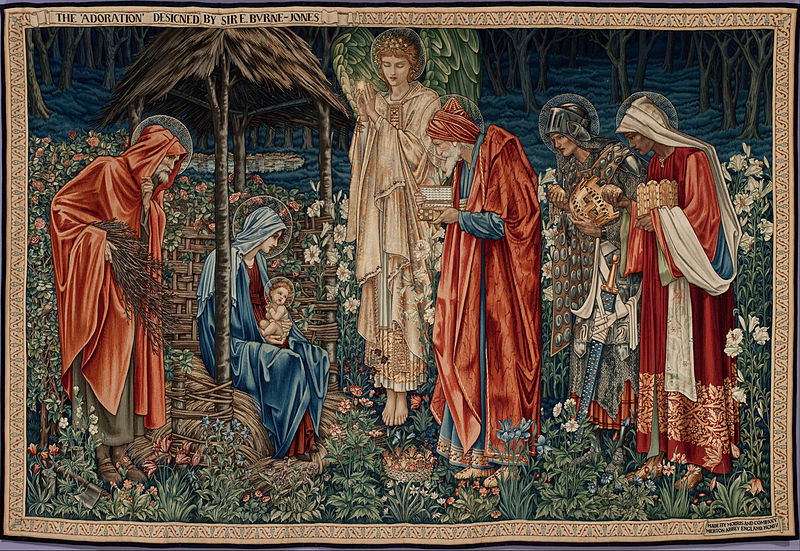 |
| The Adoration of the Magi (tapestry), 1904, by Edward Burne-Jones. Note the angel leading the magi with the Star of Bethlehem cupped in his hands. |
My father occasionally talked about the last time he saw his father. He said he was a very small boy, and there had been a blizzard on St. Patrick’s Day, and he and his mother saw his father briefly on the street.
After he was long dead, I realized he was talking about the Great St. Patrick’s Day Blizzard of 1936, when he was, in fact, 12 years old. That time compression, in an odd way, lends verisimilitude to his tale. We can all understand a fatherless boy conflating the two most memorable events of his young childhood. There is nothing rehearsed or too perfect about that: it sings from the heart.
 |
| Adoration of the Magi, 1504, Albrecht Dürer. The Bible doesn’t specify that there were Three Wise Men; it doesn’t say one was black; it doesn’t name them Balthasar, Caspar, and Melchior. |
The visit of the Magi to the infant Christ child has a star hanging over it: the Star of Bethlehem. The identity of this star has interested scientists for as long as we have studied the heavens. It may have been the conjunction of planets or stars, it may have been Halley’s Comet, which showed up in 12 BC. It may have been another comet detected in the Far East around 5 BC.
| Dream of Three Wise Men. Capital from Autun cathedral, mid-12th century, Ghiselbertus of Autun. |
The trouble is that none of these events line up perfectly enough to satisfy an image of the Magi worshipping the newborn Christ in the manger. (Of course, the story doesn’t say he was a newborn, either.) The slight misalignment between the Gospel story and what science currently says gives it the ring of truth.
.jpg) |
| Detail from Mary and Child, surrounded by angels, 526 AD, Master of Sant’Apollinare, Basilica of Sant’Apollinare Nuovo in Ravenna, Italy. |
We translate “magi” as “wise men” but they were probably actually astrologers: men who studied the influence of the heavenly spheres on the lives of mere mortals. That’s a discipline we completely discount today, but who better to follow a star to the Living God?
Let me know if you’re interested in painting with me in Maine in 2014 or Rochester at any time. Click here for more information on my Maine workshops!




.jpg)




.jpg)



